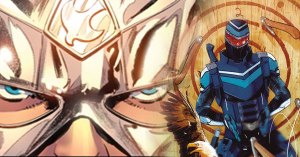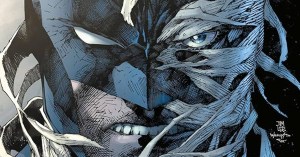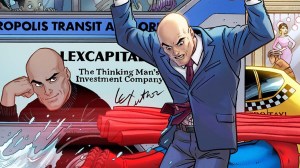
Stories have been swirling that Vertigo Comics, the DC Comics’ imprint that has been tasked with bringing mature stories to comic book store shelves for more than 25 years, may be shut down soon. The announcement that Safe Sex, a Vertigo title announced last year, would be moving to Image has only emboldened those specific rumors, while plenty more circulate about a wider shift in direction for DC Comics. While the acquisition of DC’s parent company Warner by AT&T along with quickly changing sales in the book market lend credence to the idea of a company prepared to make lots of big changes in the short term, we wanted to examine the sales health of Vertigo before accepting these rumors at face value. So, using our standards for sales analysis and comparison, let’s examine if things are as dire as they might appear for Vertigo.
A Brief History
Videos by ComicBook.com
Without engaging in a complete recap of Vertigo’s history, it seems many of its current troubles date back to 2012 when Karen Berger, the imprint’s founder, announced that she was leaving DC Entertainment. Subsequent editors have been unable to recapture the successes experienced under Berger’s leadership. The most recent sales successes, American Vampire and iZombie, both fell at the start of the decade. Vertigo has remained largely stagnant during the subsequent period leading to the 2018 announcement of a “relaunch” including 7 new titles.
Of those 7 titles, only 4 have been published and remain in publication: American Carnage, Hex Wives, High Level, and Goddess Mode. At least two of these series, American Carnage and High Level, appear to be reaching conclusions. The other 3 from the original roster have all been cancelled or, seemingly, forgotten. Border Town ceased publication after 4 issues when multiple witnesses alleged that writer and co-creator Eric Esquivel engaged in a pattern of sexual misconduct and abuse. Second Coming was cancelled before release due to controversy surrounding its portrayal of religious material, and it is now set to be published at Ahoy Comics in July. Safe Sex, the final title featured in the initial announcement, was just announced to being moving to Image Comics.
Describing this brand relaunch as rocky would be an understatement. The amount of controversy that led to DC Comics canceling 3 series suggests a lack of confidence from the start. There are still sales for the 4 surviving series, as well as what was released of Border Town. Examining their initial reception might provide additional insight into how Vertigo Comics is faring with readers.
The Vertigo Relaunch
All five series are shown below with unit sales charted through their most recent (May) releases. American Carnage is the only series to reach issue #7, but it’s important to note that all series shown are ongoing (as of this moment) with the exception of Border Town.

The first thing to note is that all of these series’ sales are very similar to one another over time. The variance between the highest and lowest selling series with issue #1 is only 4,580 units, and that decreases to only 2,435 with issue #2. That level of stability suggests that there is a steady level of interest in these titles.
This level of interest is not very high, though. The average sales of #1 issues in this relaunch was just under 16,000 copies and every single title sold less than 10,000 copies by #2. Sales are low for these comics across the board. It’s difficult to state the severity of the problem without having a better sense of how Vertigo stacks up to its closest competition, however. In order to understand where Vertigo stands today, it would be useful to examine some similar lines of comics and new series from 2018.
Points of Comparison
In order to look at other comics brands in the direct market that would be similar to Vertigo, we identified a few key criteria. First, these comics should not feature superheroes. Second, these comics would be “creator-led,” emphasizing some focus on the creative team or creator-control over the maintenance of specific intellectual property (IP). Finally, they would all need the support of a large publisher with the marketing and editorial experience that entails. Using this criteria, we identified three comparable publishers or imprints with at least 4 new series debuting around the same time, two of which also fall under the DC Comics umbrella: Sandman, Jinxworld, and Image Comics. While the new Sandman line does feature the maintenance of existing IP, it’s heavily associated with Vertigo Comics and still relies upon one of its initial co-creators, Neil Gaiman, for direction and support.
Analyzing these three brands and their respective series launches from the end of 2018 revealed that, much like Vertigo, their new series all resembled one another in sales. The greatest variance was seen in the Jinxworld titles with a maximum of approximately 25% variance from the average. Meanwhile, both Image and Sandman saw less than a 20% variation from their averages. There’s no evidence that sales are being disproportionately affected by the normal strategies that can make many superhero series problematic to track. What this essentially means is that the brands associated with these individual series are strongly linked to sales, and so we decided to compare average sales of the first 6 issues across all 4 brands.

All three of these comparable brands are performing dramatically better than Vertigo. Even the lowest-selling series outside of Vertigo, United States vs. Murder Inc from Jinxworld, outsold every single Vertigo series. It was the only series to sell below 22,000 with its #1 issue as well, possibly because it is the only continuation of an existing property (i.e. The United States of Murder Inc) rather than a new series.
What’s truly remarkable though is the consistency in sales reflected across all 4 brands. Not do the sales within each brand remain relatively close to a collective average, with nothing resembling an outlier, but the sales across time for all 4 brands reveal the same trends across time.
In direct market sales the term “attrition” is used to describe the seemingly inevitable loss of sales over time for any given series. The attrition rate, or how quickly a given series loses sales, is both consistent within each of these brands and between them. In order to detail just how closely this cohort resembles one another, we’ve plotted the average attrition rate for all 4 brands.

These attrition rates are measured in negative percentages, as units are consistently being lost across all series, with the best month-to-month scenarios simply approaching stability. Given how closely these groups resemble one another, there’s a reliable attrition rate for this sort of series. Across the first six issues it roughly goes like this: 44%-14%-12%-6%-5%.
This suggests that the starting point for a given series sales dictates much of what the individual sales will look like, at least for the first year. Furthermore, the consistency of each brand’s sales suggests that the starting point is dictated by the imprint or publisher on the cover. So, ultimately, the single issue sales health of prominent, “creator-led” series like these is defined by where they are published. This can be seen by looking backwards to a recent Vertigo success: Sheriff of Babylon. While the subsequent success of creators Tom King and Mitch Gerads has bolstered the comic in collection, the first issue only sold 10,234 copies before following a familiar downward trend.
What’s Happening
Focusing on single issues in the direct market, sales don’t reflect the quality of any given series so much as the brand under which they are published. Expectations for a new series similar to those published by Vertigo were largely determined by how they were labeled. This story makes one thing clear: Vertigo’s brand reputation is not worth much today.
This isn’t necessarily anyone’s fault either. While it’s possible to look at the departure of Berger in 2012 as the beginning of the end, it might also have been part of a natural sunset for this historically and critically significant imprint. What once made Vertigo Comics special is now being delivered better under new labels. Jinxworld and Sandman feature some of comics’ most popular talents curated ideas, and Image Comics provides a far-better deal for creator ownership and control. Vertigo was the cutting edge of comics once, but has lost the strengths and reputation that made it a powerhouse in the 1990s and 2000s.
Poor sales, constant controversies, and cancellations from across this past year only tell a small portion of the story, but it’s a portion that certainly sounds like an ending. Vertigo Comics is now a poor staging ground for creator-owned launches, as publishers like Image Comics offer more control and a better-selling brand. It’s also no longer necessary for creator-centric ideas at DC Comics, as some create their own imprints (e.g. Jinxworld) or find new homes (e.g. Black Label). With no recent hits and little cause to continue, the choice to shutter Vertigo Comics reads as being inevitable in this moment.
Even if Vertigo Comics isn’t shut down entirely, it’s unlikely to receive much attention beyond housing past hits like Preacher and Y: The Last Man. The brand still possesses a great reputation, but one that appears to be solely linked to its past. The present at Vertigo Comics is dim and the future is likely nonexistent.





